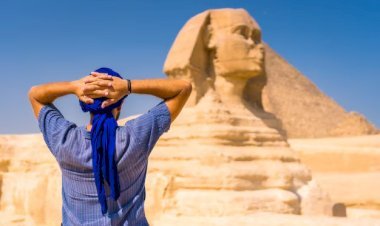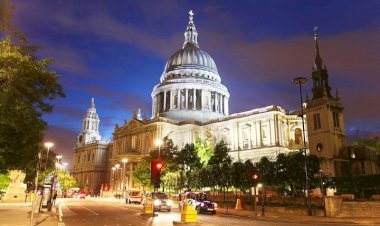Jjimjilbang: The Ultimate Korean Spa Experience You Need to Try in 2025
Looking for the perfect mix of wellness, culture, and relaxation? Discover what a jjimjilbang is, why it's loved in Korea, and what to expect on your first visit—saunas, body scrubs, food, and more.

If you're seeking a unique blend of relaxation, cultural immersion, and wellness, a jjimjilbang—a traditional Korean bathhouse—is an experience you shouldn't miss. These establishments offer a diverse range of services, from various types of saunas and baths to entertainment and dining options, making them a staple in Korean leisure culture.
What Is a Jjimjilbang?

A jjimjilbang (찜질방) is a large, gender-segregated public bathhouse in South Korea that has evolved from traditional bathhouses known as mogyoktang. The term "jjimjilbang" combines "jjimjil" (찜질), meaning "heating," and "bang" (방), meaning "room." These facilities gained popularity in the 1990s and have since become integral to Korean culture.
Typically, a jjimjilbang includes:
- Gender-segregated bathing areas: Featuring hot tubs, showers, and traditional kiln saunas.
- Unisex common areas: Equipped with snack bars, ondol-heated floors for lounging and sleeping, wide-screen TVs, exercise rooms, ice rooms, heated salt rooms, internet cafes, karaoke bars, and sleeping quarters with bunk beds or sleeping mats.
Many jjimjilbangs operate 24/7, making them popular weekend getaways for families and individuals seeking relaxation and socialization.
Historical and Cultural Significance

The tradition of communal bathing in Korea dates back centuries, with roots in Buddhist purification rituals. During the Goryeo dynasty (918–1392), bathing was a customary ritual, often performed in rivers, hot springs, or streams near temples. These practices were not only for hygiene but also held religious significance, reflecting the cultural importance of water and purification.
Over time, these communal baths evolved into modern jjimjilbangs, blending traditional practices with contemporary amenities to cater to the needs of today's society.
Popular Types of Sauna Rooms in a Jjimjilbang

Jjimjilbangs offer a variety of specialized sauna rooms, each designed with unique materials and temperatures to promote health and relaxation:
- Charcoal Room: Lined with charcoal, believed to purify the air and detoxify the body.
- Salt Room: Walls covered with mineral-rich salt blocks, promoting skin health and respiratory benefits.
- Ice Room: A cold room used to cool down after hot saunas, aiding in circulation and skin tightening.
- Clay Room: Features clay walls and floors, which are thought to improve skin conditions and relieve joint pain.
- Jade Room: Incorporates jade stones, believed to emit healing energies that reduce stress and fatigue.
These rooms typically range in temperature, allowing guests to choose their preferred heat level for optimal comfort and benefit.
The Bathing and Scrub Ritual

A quintessential part of the jjimjilbang experience is the seshin, or body scrub. After thoroughly washing, patrons can receive an exfoliating treatment performed by skilled staff using textured mitts. This process removes dead skin cells, leaving the skin rejuvenated and smooth.
Key aspects include:
- Gender-segregated bathing areas: Nudity is customary, and guests are expected to shower before entering communal baths.
- Variety of pools: Featuring different temperatures and sometimes infused with herbs for added benefits.
- Body scrubs: Enhance circulation and promote healthier skin.
This ritual not only cleanses the body but also provides a sense of renewal and relaxation.
Health Benefits of Jjimjilbang

Regular visits to a jjimjilbang offer numerous health advantages:
- Cardiovascular Health: Studies indicate that frequent sauna use is associated with a reduced risk of sudden cardiac death, coronary heart disease, and all-cause mortality.
- Mental Well-being: Sauna bathing has been linked to improved mood and decreased anxiety, contributing to overall mental health.
- Detoxification: Sweating helps eliminate toxins from the body, promoting clearer skin and enhanced bodily functions.
- Muscle Relaxation: Heat therapy soothes muscle tension and alleviates joint pain, aiding in recovery from physical exertion.
Incorporating jjimjilbang sessions into one's routine can be a holistic approach to maintaining physical and mental health.
Food and Drinks Inside Jjimjilbang

To complement the wellness experience, jjimjilbangs offer a variety of traditional Korean snacks and beverages:
- Sikhye: A sweet rice drink served cold, popular for its refreshing qualities post-sauna.
- Baked Eggs: Slow-cooked eggs with a unique flavor and texture, often enjoyed as a light snack.
- Bingsu: A shaved ice dessert topped with sweet red beans, fruits, or condensed milk, providing a cooling treat.
These offerings enhance the jjimjilbang experience, allowing guests to indulge in Korean culinary delights while relaxing.
Entertainment and Relaxation Facilities

Beyond bathing and saunas, jjimjilbangs provide various amenities to ensure a comprehensive leisure experience:
- Sleeping Quarters: Gender-segregated or shared sleeping areas with floor mats, bunk beds, or heated floors (ondol) for resting or overnight stays.
- Massage Chairs: Available for muscle relaxation after sauna sessions.
- PC Rooms and Wi-Fi Zones: Access to internet for entertainment or work.
- Karaoke and Game Zones: Fun activities for groups or families.
- Television Lounges: Relaxation spaces where visitors watch TV while cooling down.
- Children’s Play Areas: Many jjimjilbangs are family-friendly and offer kid zones.
These extra facilities make jjimjilbangs a great place to spend several hours—or even an entire night—without feeling bored.
Best Jjimjilbangs to Visit in South Korea (2025)

If you're planning to visit South Korea and want to enjoy an authentic jjimjilbang, here are some of the most popular and highly rated locations as of 2025:
- Dragon Hill Spa (Seoul) – A well-known spa near Yongsan Station offering themed saunas, outdoor baths, and entertainment options.
- Siloam Sauna (Seoul) – Near Seoul Station, it’s famous for its medicinal rooms and modern hygiene standards.
- Spa Land Centum City (Busan) – Located inside Shinsegae Department Store, one of the largest jjimjilbangs with over 20 themed rooms.
- The Spa in Garden 5 (Seoul) – A luxurious, quiet jjimjilbang perfect for visitors who want a more relaxing, upscale experience.
- Itaewon Land (Seoul) – A favorite among international visitors, with good English signage and a variety of hot and cold pools.
These jjimjilbangs are accessible by public transport and generally charge around ₩10,000–₩20,000 (approx. $8–$15) for day entry. Overnight stays may cost slightly more.
Read Also: Philippines Travel Checklist: Must-Have Tech for a Smooth Trip
Jjimjilbang Etiquette: Do’s and Don’ts

To enjoy a jjimjilbang respectfully and comfortably, it's helpful to know the basic etiquette:
- Do wash thoroughly before entering pools or saunas. Cleanliness is very important.
- Do wear the provided uniform in shared/common areas. Nudity is only allowed in same-gender bath zones.
- Don’t be loud—people visit jjimjilbangs to relax, so maintain a quiet atmosphere.
- Don’t take photos or videos inside the spa for privacy reasons.
- Do hydrate often—drinking water or sikhye helps replace fluids lost through sweating.
These customs help maintain a peaceful, respectful environment for all guests.
Jjimjilbang for Solo Travelers and Tourists

Jjimjilbangs are ideal for solo travelers or tourists who want to unwind without spending too much money:
- Safe and Secure: Lockers and staff supervision make them safe for solo use.
- Affordable Overnight Option: Instead of booking a hotel, many tourists stay overnight in jjimjilbangs—some even plan their layovers around them.
- Cultural Immersion: It’s a great way to experience authentic Korean daily life.
- No Need to Speak Korean: Many popular jjimjilbangs have English signs or picture menus.
Whether you're on a budget or looking for a unique cultural experience, jjimjilbangs are an excellent choice.
Preparing for Your First Jjimjilbang Visit

If you're new to jjimjilbangs, here’s a short checklist and guide to prepare:
What to bring:
- A fresh set of clothes for after your visit.
- A water bottle (although drinks are also sold inside).
- Hair tie or cap for long hair.
- Face moisturizer (the heat can dry your skin).
- Earplugs and an eye mask if you plan to sleep overnight.
What’s usually provided:
- A spa uniform (usually shorts and t-shirt).
- Two towels.
- Locker key.
- Shampoo, soap, and toothpaste may be available—but bringing your own is always safe.
Following these tips helps you feel confident and ready to relax.
Conclusion
A jjimjilbang is much more than a Korean spa—it's a community space where you can refresh your body, calm your mind, and enjoy a slice of daily Korean culture. Whether you're sweating in a salt room, getting your skin scrubbed, or sipping sikhye on a warm mat, the experience is both unique and restorative.
With affordable prices, 24-hour service, and welcoming environments, jjimjilbangs are a fantastic way to enjoy wellness and relaxation—whether you’re a local or just visiting. In 2025, with health and self-care more important than ever, this traditional Korean experience remains a modern-day wellness essential.
FAQs
Q1. What is a jjimjilbang?
A jjimjilbang is a traditional Korean spa with saunas, hot baths, sleeping rooms, and entertainment areas. It’s a place for relaxation and health.
Q2. Is it okay for foreigners to visit jjimjilbangs?
Yes, jjimjilbangs are open to everyone. Many offer English signs or pictorial guides, especially in tourist areas.
Q3. Do you need to be naked in a jjimjilbang?
Yes, in the gender-separated bath areas. However, in the common areas, everyone wears spa uniforms.
Q4. How much does a jjimjilbang cost?
Most jjimjilbangs charge ₩10,000–₩20,000 ($8–$15) for day use. Staying overnight may cost slightly more.
Q5. Can I sleep in a jjimjilbang?
Yes, there are usually quiet rooms or heated floors where you can sleep. It’s a popular option for travelers on a budget.

















